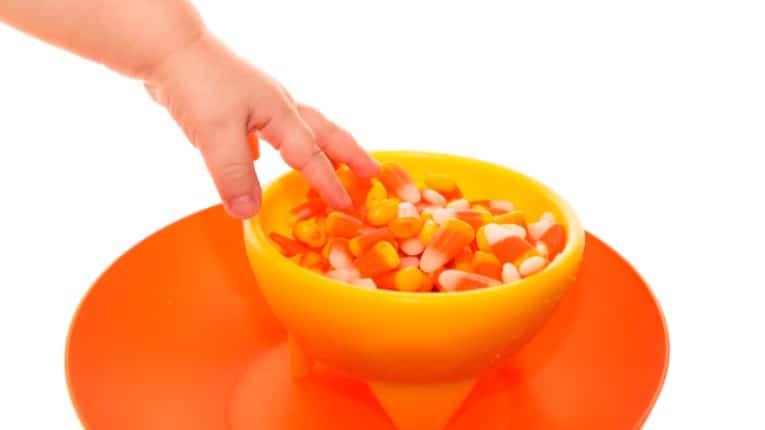
Using candy corn as an illustration is a great way to helps kids understand the Trinity. In Part 2 of “Candy Corn and the Trinity,” kids will learn the distinct roles of God the Father, Jesus the Son, and the Holy Spirit.
TARGET AGES: 10-14
OBJECTIVE: To understand the Trinity, as compared to a piece of candy corn, has three distinct components (God the Father, Jesus the Son, and the Holy Spirit) with unique roles.
MAIN IDEA: A piece of candy corn has three distinct colors just like the Trinity has three distinct persons. The bible is very clear that God the Father, Jesus the Son, and the Holy Spirit all have special roles within the Trinity.
SCRIPTURE PASSAGES: Matthew 28:19 (review), Genesis 1:1-2 (review), John 1:1-3 (review), Genesis 1:26 (review), John 10:30 (review), Hebrews 4:13, Matthew 24:36 & 42, John 14:6, John 16:7-8, Romans 8:26-27
MATERIAL(S): candy corn snack, white board or poster board, activity sheets, writing utensils
WORKSHEET: Trinity Activity Sheet
——————————————————————————————————————-
Introduction (15 minutes)
OPENING PRAYER: Say, “Lord, help us today as we learn the roles of God, Jesus and the Holy Spirit within the Trinity. Amen.”
PREVIOUS LESSON REVIEW: Say, “Last week we started talking about the Trinity. What item did we use to help us understand the Trinity (candy corn)? Who are the three persons of the Trinity?” Pass out the candy corn snack and look up the following verses as a class to review how the Bible proves there is a Trinity:
Matthew 28:19 – Jesus identified the Trinity (God the Father, Son and Holy Spirit).
Genesis 1:1-2, John 1:1-3 – The Holy Spirit and Jesus were present at creation.
Genesis 1:26 – God said, “Let Us,” and “Our image,” indicating plural persons.
John 10:30 – Jesus said, “I and the Father are one.”
Continue by explaining today’s lesson will explore the major characteristic(s) of God, Jesus, and the Holy Spirit. List “God, Jesus, and Holy Spirit” on the board with the appropriate scripture below the names, and fill in the characteristics as you read.
Lesson (15 minutes)
Comment, “Now we are going to look up verses that tell us the characteristics of each person in the Trinity.”
JESUS THE SON – Savior (John 14:6). Comment, “Jesus specifically came to earth as a human, lived a perfect life, and died for our sins.”
HOLY SPIRIT – Convicts us of sin (John 16:7-8) and is our helper/intercessor (Romans 8:26-27). Say, “The bible tells us the Holy Spirit convicts us of our sin, helps us in our weakness, and speaks to God on our behalf.”
Trinity Activity Sheet (10 minutes) *See attached*
Pass out the Trinity Activity Sheets and writing utensils and then explain the “Brainstorm” section by reading the example. Give suggestions for individual roles if necessary. Then ask the students to look up and complete the “Bible Study” section on their own. Go over the answers at the end of class to make sure each student understands the unique roles of God the Father, Jesus the Son, and the Holy Spirit within the Trinity.
Conclusion (5 minutes)
RECAP: God is our creator and knows everything about his creation. Jesus is our Savior who paid the penalty of death for our sins. The Holy Spirit draws us into a relationship with God, lives inside us once we become believers, and speaks to God on our behalf.
CLOSING PRAYER: “God, thank you for the Trinity. We ask for strength and courage to share with others the truth of your word. Amen.”
